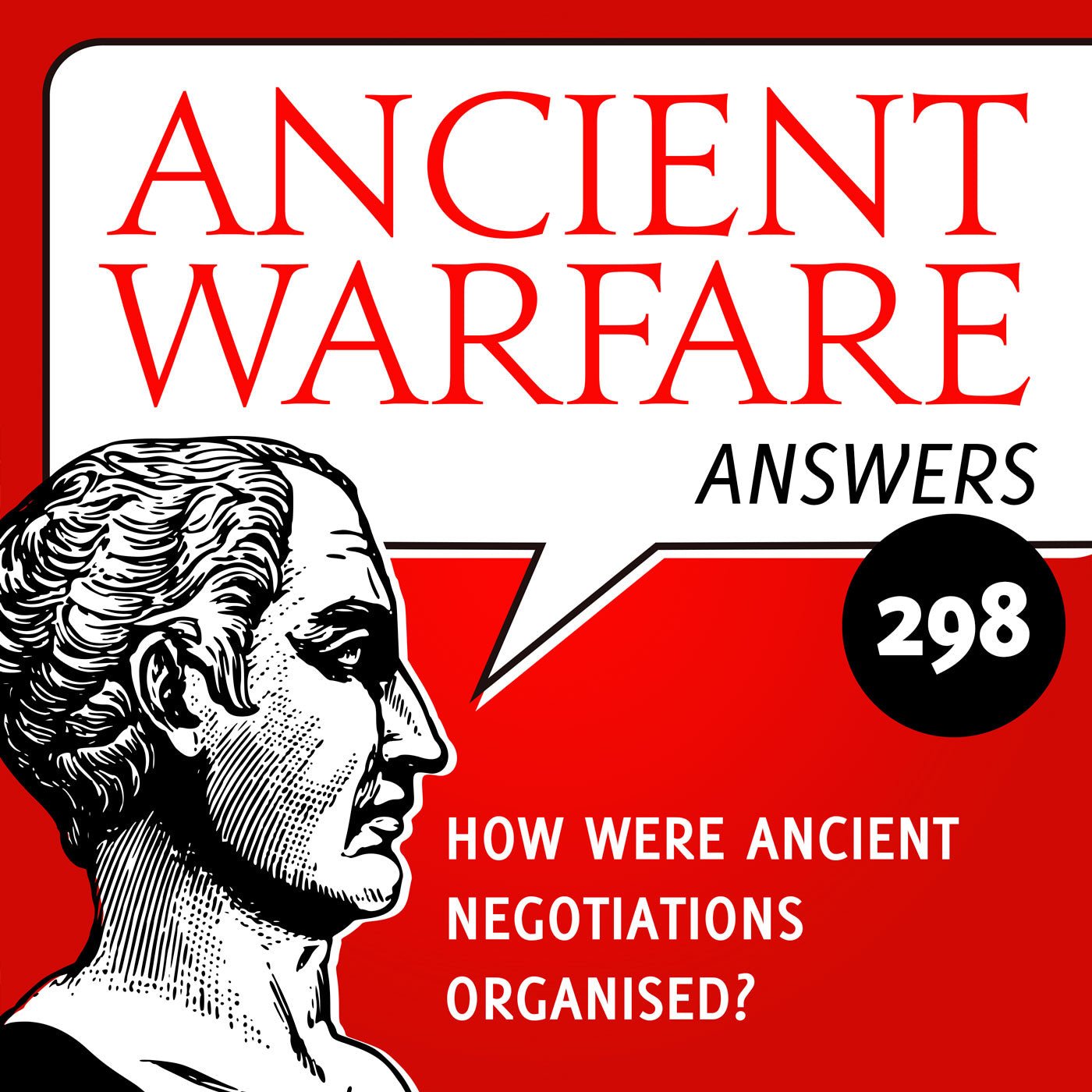The Battle of Drepana, 249 BC (part 2)
Did swimming chickens cost Rome a naval battle?
PART 2: ROME LOSES A FLEET
With the outbreak of the First Punic War against Carthage in 264 BC, Rome was confronted by an enemy possessing enormous naval strength. Once their horizons had broadened beyond Italy, with warfare encompassing extensive overseas operations, the Romans needed to contend with hostile fleets as well as armies. They had previously relied upon their allies to provide ships, but now the Romans constructed their own, and in large numbers. They would achieve astonishing successes once they had learned to employ astute boarding tactics to bring their top-quality heavy infantry to bear in naval engagements. These methods would not guarantee victory at sea, however, and at Drepana, the Romans would learn a bitter lesson about the peril of overconfidence.
In the aftermath of the Roman defeat in Africa in 255 BC, the war in Sicily continued. After much bloody fighting, by 249 BC the Romans had managed to reduce the Carthaginian presence to two cities, Lilybaeum (modern Marsala) and Drepana (modern Trapani). Lilybaeum was currently under siege by Rome’s legions, assisted by numerous crewmen from the Roman fleet there. Roman siegeworks were being pushed ever closer to the city’s walls. Little by little the Romans crept forward, advancing their works and knocking down Lilybaeum’s defenses as they did so.
Carthage dispatched a relief force of fifty ships under an officer named Hannibal to reinforce the garrison in Lilybaeum. The fleet departed with ten thousand soldiers embarked to strengthen the besieged city. The Carthaginians caught a strong and favorable wind as they approached the harbour, and sped right past the surprised Roman ships guarding the entrance. The Romans were too astonished to react to the daring Carthaginians, and the fleet made it safely into port at Lilybaeum.
With his army thus augmented, the Carthaginian commander in Lilybaeum launched an assault against the Roman siegeworks. Desperate fighting ensued, and the Romans were almost driven away from their lines. But after much bloody combat, the Carthaginians called a retreat, and the siegeworks remained in Roman possession.
After this attack failed, Hannibal led his ships out of the harbour at night, and in a display of the fine seamanship for which the Carthaginians were noted, escaped from Lilybaeum unnoticed by the Romans. He then sailed to nearby Drepana where he joined with the Carthaginian admiral, Adherbal, who was in command of the bulk of the Carthaginian fleet.
Luck favours the Carthaginians
Back in Lilybaeum, luck was also favoring the Carthaginians. Another strong wind had arisen, and the Carthaginians conceived a plan to destroy the Roman siegeworks with fire. They threw lit torches onto the wooden siegeworks, which were old and dry. The same wind made it impossible for the Romans to fight the flames, and the vigorous blaze did away with the siegeworks. Many Romans had perished as a result of the Carthaginian attacks, and so they halted their attempt to take the Lilybaeum by assault, pulled back a short distance from the city, and settled down for a long wait.
When news of this disaster reached, Rome, along with the report of the casualties suffered by the sailors and rowers who had joined in the attack on Lilybaeum, the Romans reacted with characteristic determination. Ten thousand men were raised to replace the losses suffered and they were duly sent to join the Roman fleet.
A new consul also arrived at Lilybaeum: Publius Claudius Pulcher. Pulcher had a reputation for being a martinet, and instituted ferocious disciplinary measures upon taking command. He also heaped scorn on the efforts to take the city by the previous commanders of the siege.
In spite of the odious discipline that he imposed on the men, and his rather erratic behavior, Pulcher convinced his officers and men to go along with a new plan of his own devising. Pulcher wanted to take the fight to the enemy. This involved striking at the Carthaginian fleet now stationed at Drepana, just a few miles away. The Carthaginians knew that the Roman fleet had suffered heavy losses in the siege at Lilybaeum. The enemy was unaware, however, of the 10,000 replacements that the Roman government had just drafted and sent to the fleet at Lilybaeum. If the Carthaginians believed that the Roman fleet was undermanned, it would not expect the Romans to come looking for a fight, and so they would not be ready for battle. Pulcher therefore reasoned that there now existed a chance to bottle up the dormant Carthaginian fleet in harbour.
Pulcher’s officers were enthusiastic about the plan, and the best legionaries, always eager for booty, were embarked aboard the Roman ships as marines. At midnight the Roman fleet slipped away and sailed for Drepana. As Pulcher had guessed, Adherbal was shocked to see the Roman fleet arriving at his doorstep. What Pulcher had not foreseen was the alacrity with which Adherbal rounded up his sailors and soldiers and put them to sea. Pulcher had expected the Carthaginians to stay in port and wait out a siege.
Swimming chickens
An interesting legend regarding the battle, confirmed by the second century A.D. Roman historian Suetonius, arose at this point. Supposedly the sacred chickens carried on board Pulcher’s flagship refused to peck at the food that had been laid out for them as part of the taking of the pre-battle auspices, and this was deemed a bad omen by the deeply superstitious Romans. In a move that would have horrified pious Romans everywhere, the prideful Pulcher seized the chickens and threw each of the squawking birds overboard, into the azure Mediterranean waters. “If they will not eat,” the haughty nobleman cried, “let them drink!” Whatever the truth of Pulcher’s impiety, his alleged actions were used to explain the outcome of the ensuing engagement with the Carthaginian fleet.
Meanwhile, in Drepana, Adherbal responded rapidly to the unforeseen presence of a Roman fleet. He quickly collected his men and boarded them on his ships, warned them all of the danger inherent in being trapped in port, and fired them up for battle at sea. As the Romans entered the harbour of Drepana from the south, hugging close to the shore on his right, Adherbal was already leading the Carthaginian fleet out of the harbour along its northern edge, heading east. Now it was Pulcher’s turn to be shocked. There, in line astern, with Adherbal flagship in the lead, was the entire Carthaginian fleet escaping from the trap. Adherbal had instructed all of his captains to keep their eyes on his ship and to follow his lead. The Carthaginian admiral then swung around to port and brought his ships south. The Carthaginians were now between the Romans and the open sea.
Pulcher was poorly situated to respond to Adherbal’s move. Instead of following the usual Roman practice of leading from a ship in the front of the fleet, Pulcher was in the rear, so as to gather up lagging vessels. Pulcher ordered an immediate turn to port, but the suddenness of the maneuver caused several Roman galleys to collide within the narrow confines of the harbour.
In time, the Roman managed to point their bows to the open sea, but their backs were perilously close to the Sicilian coast. Pulcher was now positioned on the Roman left wing. Adherbal, more or less opposite the Roman commander, had succeeded in outflanking the Roman line with five ram-equipped war galleys. He arrayed all five in line abreast, perpendicular to the end of the Roman left wing. At Adherbal’s signal, the Carthaginian fleet advanced.
The two fleets engaged, and savage fighting resulted. Accurate figures for the size of the fleets engaged are lacking. It is fair to say that the Carthaginians had about 100 ships, and the Romans had at least 120. The sides were evenly matched, therefore, and neither could gain the upper hand in the battle’s initial stage. In time, though, the Carthaginians began to prevail. The Romans had almost certainly done away with their ravens, and this made it much more difficult for them to grab hold of the enemy ships and bring their own greatest strength - their legionaries fighting as marines - into action. Further, the Roman crews were filled with many raw recruits who had little or no experience. This could hardly have helped the efficiency of the rowing of the Roman galleys.
The Carthaginians, conversely, were at this time in the war the superior seamen, and without fear of the ravens were able to demonstrate to brutal effect the devastating power of a ramming attack. The Carthaginians were able to row more efficiently, and if one of their ships got into trouble their greater skill at rowing allowed them to disengage and retreat to the open sea. The Romans, however, were less able rowers, and were hemmed in by the closeness of the Sicilian shoreline. All along the battleline the Roman ships found themselves incapable of escape and unable to give aid to any of their hard-pressed comrades. Worse, several Roman galleys ran aground in the shallow waters off of the Sicily, making them easy prey.
Pulcher saw the disaster unfolding before his eyes, turned tail, and fled the scene. Thirty ships of the left wing escaped with him. Otherwise, at least ninety-three Roman ships were either sunk or captured that day.
An unmitigated disaster
For the Romans, Drepana was an unmitigated disaster. Each Roman ship would have had about 420 twenty men onboard (300 rowers and 120 marines). The loss of ninety-three ships meant that at least 39,000 men were either killed or captured, except for a relative handful that made it ashore and escaped inland. A Roman loss of such a magnitude was a stunning reversal of prior fortune. The result of Drepana gave Carthage yet another lease on life. Looking back on the dire and lopsided outcome of the battle, the Romans would nod grimly, and say that the offended gods had repaid Pulcher for his impiety in discarding the sacred chickens.
But is there a more rational reason for the terrible outcome suffered by the Romans? It was not the mishandling of the sacred chickens that lost the Romans the battle, even if such an explanation made for a good morality tale. Rather, it was Pulcher’s own ineptitude that sealed their doom. Pulcher misjudged Adherbal’s aggressiveness, and also approached too close to the shore. He thereby allowed Adherbal to escape the harbour and entrap the Roman fleet against the coast.
Yet birds may have had something to do with the Roman defeat, after all. By removing the “ravens” from their ships, the Romans sacrificed the device that had been the great equalizer in previous naval battles with the famously adept Carthaginian seamen. The ravens might have stood the Romans in good stead considering how many new rowers the Romans had in their crews.
Back at Rome, Pulcher was blamed for the defeat. He “fell into disgrace”, Polybius noted tersely, and “was attacked on all sides for his conduct of the battle.” He was tried, found guilty, and fined heavily by the government, and only narrowly escaped execution for the fiasco at Drepana.
Adherbal was naturally a hero in Carthage, and the arrival of captured Roman ships and numerous prisoners must have made a grand impression there. But the Carthaginians, no matter what the short-term success, were unable to break the Roman will to win. The Romans lost at least 700 galleys in the course of the war, but their determination to prevail was never shaken. The Romans just kept on coming, raising new fleets, and new armies, until in the end, they wore the Carthaginians down. By 241 BC, Carthage was destitute of the means to continue the war, and sued for peace. The peace was a bitter one, and in many ways only sowed the seeds of a second dreadful war between Rome and Carthage.
Marc G. De Santis writes frequently on ancient military history.




